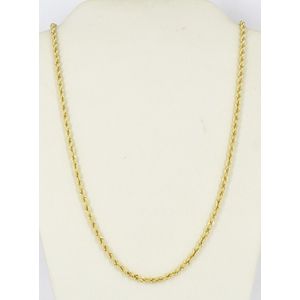Kangxi porcelain vase with European clobbering
A rare and interesting Kangxi period porcelain vase and cover, with later European clobbering, 18th century, octagonal inverse baluster shape, underglaze blue and iron red original 'Long Eliza' decoration with European polychrome enamel overglaze and gilding. faux Chinese seal mark to base. Old repairs. Height 28.5 cm.
You must be a subscriber, and be logged in to view price and dealer details.
Subscribe Now to view actual auction price for this item
When you subscribe, you have the option of setting the currency in which to display prices to $Au, $US, $NZ or Stg.
This item has been sold, and the description, image and price are for reference purposes only.
- Faux - A French word meaning "false", but when used in decorative arts, the intention is not to deceive, but to simulate the decorative effects of the more expensive material it is imitating. The term " faux bois" meaning "false wood" refers to a furniture item that has been decorated with a marked grain (woodgrain finish) to imitate a more expensive timber.
- Gilding - Gilding is a method of ornamentation whereby a thin sheet of gold metal is applied to items made of wood, leather, ceramics, glass and silver for decorative purposes.
For furniture including mirrors, the sheet of gold is usually applied over a coating of gesso. Gesso is a mixture of plaster of Paris and gypsum mixed with water and then applied to the carved wooden frames of mirrors and picture frames as a base for applying the gold leaf. After numerous coats of gesso have been applied, allowed to dry and then sanded a coat of "bole", a usually red coloured mixture of clay and glue is brushed on and allowed to dry, after which the gold leaf is applied. Over time parts of the gilding will rub off so the base colour can be seen. In water gilding, this was generally a blue colour, while in oil gilding, the under layer was often yellow. In Victorian times, gilders frequently used red as a pigment beneath the gold leaf.
Metal was often gilded by a process known as fire gilding. Gold mixed with mercury was applied and heated, causing the mercury to evaporate, the long-term effect of which was to kill or disable the craftsman or woman from mercury poisoning. The pursuit of beauty has claimed many victims, not the least of which were the artists who made those pieces so highly sought after today. - Overglaze on Porcelain - Overglaze decoration on porcelain refers to a decorative technique where designs are painted onto a fired and glazed porcelain surface, and then fired again at a lower temperature to fuse the decorative design onto the glaze surface. This technique allows for a wide range of colors and intricate designs that would not be possible with underglaze decoration, which is applied before the glaze is fired.
- Polychrome - Made or finished in many colours. For furniture, it is used to indicated a painted finish.
This item has been included into following indexes:
- Chinese ceramics, dynasty mark or period
- Chinese ceramics, item type - vases, other 2,484
Visually similar items

9ct gold and pearl ring approx 3.1 grams, size M/6
Sold by
in
for
You can display prices in $Au, $US, $NZ or Stg.

Royal Doulton porcelain twin handled vase, of cylindrical form decorated with frieze depicting a Middle Eastern scene of figures, signed F.Henri, flanked by handles, height 22 cm
Sold by
in
for
You can display prices in $Au, $US, $NZ or Stg.

A twisted chain necklace, stamped 18ct yellow gold. Weight 5.7g
Sold by
in
for
You can display prices in $Au, $US, $NZ or Stg.

Pair of Danish Wall Mounted Bedside Tables, c. 1960, teak, each retains manufacturer stamps (2)
Sold by
in
for
You can display prices in $Au, $US, $NZ or Stg.
